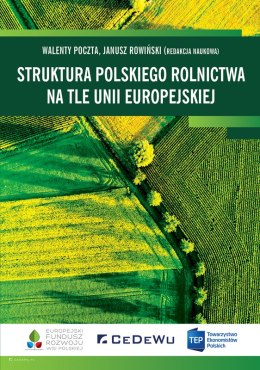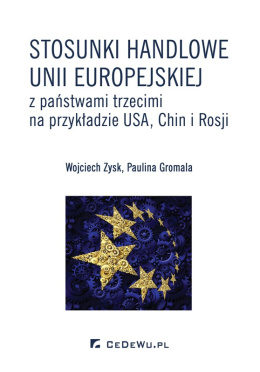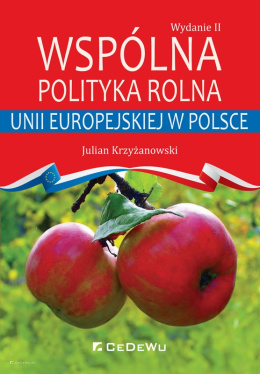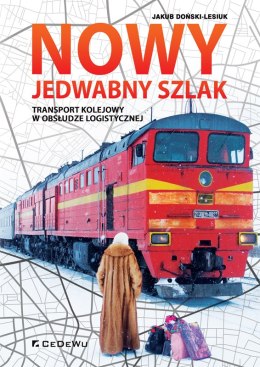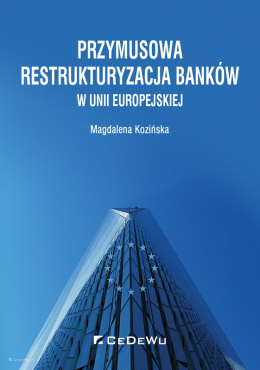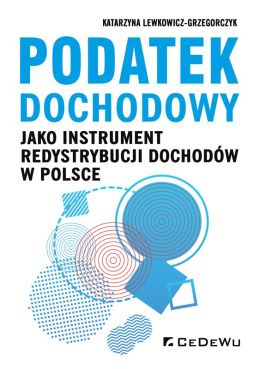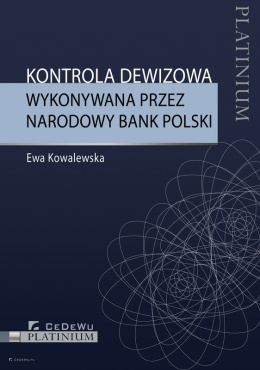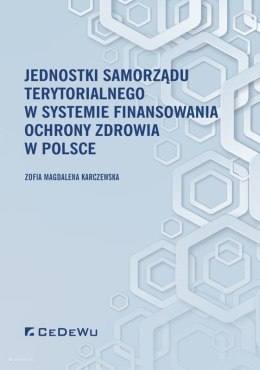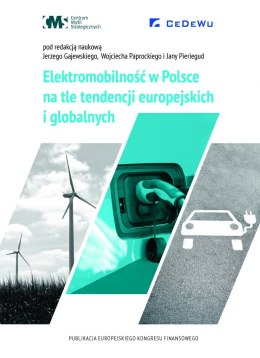- Kategorie
-
European Union - China. Trade Relationships. In the 70 years of born anniversary and 47 years of scientific work

In this research work, Author focus on the analysis of the trade relationships between European Union and People Republic China. Realistic point is important trends in the trade regime between EU and China. China is already in the process of rebalancing its economy towards greater reliance on domestic drivers of growth, in particular consumption. In order to continue its fast convergence in living standards with more prosperous societies, China will also need to increasingly rely on multifactor productivity gains as the key engine of growth. Labour productivity in both manufacturing and services are under 10% of the US level, demonstrating the distance to the technology frontier. Although the agriculture sector is a much smaller share of the economy than in the past, there is also ample scope to improve its productivity while easing resource constraints by strengthening agriculture innovation. A possible policy road map for sustaining this transition towards a more inclusive, high-prod
| Wysyłka w ciągu | 24 godziny |
| Kod kreskowy | |
| ISBN | 978-83-8102-142-5 |
| EAN | 9788381021425 |
In this research work, Author focus on the analysis of the trade relationships between European Union and People Republic China. Realistic point is important trends in the trade regime between EU and China. China is already in the process of rebalancing its economy towards greater reliance on domestic drivers of growth, in particular consumption. In order to continue its fast convergence in living standards with more prosperous societies, China will also need to increasingly rely on multifactor productivity gains as the key engine of growth. Labour productivity in both manufacturing and services are under 10% of the US level, demonstrating the distance to the technology frontier. Although the agriculture sector is a much smaller share of the economy than in the past, there is also ample scope to improve its productivity while easing resource constraints by strengthening agriculture innovation. A possible policy road map for sustaining this transition towards a more inclusive, high-productivity.
China is slow in transforming the achievements of technological and scientific research into production. China is weak in industrial innovation. The upgrading of the industrial sectors among state owned enterprises lacks the support of capital and technology. These weak points have become obstacles in the quick development of a knowledge-based economy. China's domestic reforms will determine whether its economy will be transformed into a more sustainable model and more effective model. In this sense, Chinese foreign policies are an extension of China domestic politics.
The EU should review its current trade policy strategy based on bilateral deals and re-focus its trade policy on the WTO. EU should also adopt a truly global approach in its trade policy towards China. This means involving not only the United States and Japan, but also successful mediumsized industrial and emerging economies.
Areas such as, trade reciprocity and inward investment illustrate how important successful bilateral links between the two economies are to future prosperity. A long-termed stability of China depends on the fast economic growth, which is possible only when this country will be a partner able to play global roles. Question raised is whether the West with EU will see China's rise as an opportunity for cooperation or for conflict. Economic growth is generally more preferable in China to military and extensive expansion.
INTRODUCTION 17
CHAPTER I
THE THEORY OF THE FOREIGN TRADE POLICY 21
1. The Contemporary Models of Foreign Trade Policy 21
2. Trade Interests Indicated by Export Orientation and Import Sensitivity 24
3. Foreign Trade Policy in Different Types of Authoritarian Regimes 26
4. Protectionism Pressures in Different Political System 27
5. The Level of Protectionictic Pressures 29
6. The Main Trade Conflicts 31
7. Controversial Issues in Agricultural Products 34
8. Liberalisation of Foreign Trade Policy and Natural Environment Protection 39
9. New Mercantilist Tendencies in the Contemporary Foreign Trade Policy 41
CHAPTER II
THE REDUCTION OF THE INTERNATIONAL TRADE BARRIERS 45
1. The Contemporary Global Trade Order 45
2. The Issues of Reductions of Trade Barriers 48
3. Globalisation the World Economy 53
4. The Puślecki Paradox 57
5. Changes in the Globalisation Processes 58
6. The Doha Round Negotiations on the International Trade Liberalisation 61
CHAPTER III
NEW CONFIGURATION OF EU AND CHINA FOREIGN TRADE POLICY MEASURES 63
1. Trade Measures in Contemporary Foreign Trade Policy of EU and China 63
1.1. Trade Facilitating Measure 64
1.2. Trade - Remedy Measures 65
1.3. Other Trade and Trade-Related Measures 69
2. Sanitary and Phytosanitary Measures (SPS) 70
3. Technical Barriers to Trade (TBT) 76
CHAPTER IV
CHINA'S NEW ROLE IN THE EU EXTRA TRADE RELATIONS 81
1. The Variation in the Foreign Trade Policy Among States 81
2. Intensive Economic Growth and Inequality Development of China 82
3. The Liberalisation of China Trade Policy and Their Effects 89
4. The Increase of China's Role in EU Extra Trade 96
CHAPTER V
INNOVATION AND KNOWLEDGE IN CREATION OF EUROPEAN UNION COMPETITIVENESS AND SOCIAL SECURITY 105
1. General Remark 105
2. Knowledge-Based-Growth (KBG) Theory 106
3. The Concept of Innovation System 110
4. Innovation System at the Level of the Region 114
5. The Innovation System and Innovation Process 116
6. Technological, Complementary and Additive Alliances as well as Consortia for Research and Development (R&D) 119
7. Business Consulting, Knowledge-Absorbing Business Service (KIBS) and Links Between Science and Industry 121
CHAPTER VI
THE KNOWLEDGE BASED GROWTH AND EU - CHINA TRADE RELATIONS 125
1. The Increase of the Role Knowledge Based Growth 125
2. The Triple Helix Model 130
3. Constructed Advantage 132
CHAPTER VII
THE NEW STRATEGIES OF THE EUROPEAN UNION ECONOMIC GROWTH IN THE CONDITIONS OF THE CHINA'S COMPETITIVENESS INCREASE 135
1. The Economic and Social Cohesion Policy of the European Union in the New Conditions of the China Development in the XXI Century 135
2. The Implementation of the Lisbon Strategy 138
3. European Research Area (ERA) 140
4. Seventh Framework Programme of the European Union (2007 to 2013) 143
5. Europe 2020 Strategy and Innovation Union 148
6. Financial Instrument of Innnovation Union Horizon 2020 153
7. The Results of Knowledge, Innovation and Human Capital in Increasing Productivity, Creation of Jobs and Economic Growth 165
CHAPTER VIII
THE RISE OF KNOWLEDGE-BASED ECONOMY IN CHINA 169
1. The Influence of the Rise Knowledge~Based Economy on the Economic Development in China 169
2. Relevant Facts and Achievements, Booming High-Tech Development Zones 171
3. Warming Up Venture Capital 173
4. The Rise an E-Business Era 174
5. Related Matters and Prospects 175
6. The Future of China New Economy 176
CHAPTER IX
INNOVATION AND KNOWLEDGE-BASED ECONOMY IN CHINA 181
1. The Main Aspects of the Policy of Technical Development in China 181
2. In Direction to New Innovation Policy in China 185
3. Human Capital 188
4. China in the Process to Increase its Technological Capability 191
5. National Competitiveness of China 194
6. National Innovation Systems of China 200
7. Models of National / Regional / Sectoral Linkages in China 203
8. Diffusion policy and pragmatism with Chinese characteristics 206
9. The National Medium and Long-term Development Plan for High Technology 2006-2020 211
10. Policy Implications 217
10.1. Innovation 217
10.2. Domestic Policy 219
11. Future Research Directions 221
CHAPTER X
THE CHALLENGES FOR THE TRADE RELATIONSHIPS BETWEEN EU AND CHINA 223
1. Multilateralizing Preferential Tariffs 223
2. Breaking the Market Access Impasse 225
3. Proliferation of Non-Tariff Measures (NTMs) 226
4. Services and Investment 228
5. Competition Policy and Disciplining Export Duties 229
6. Energy and Climate Change 231
7. Exchange Rates and Macroeconomic Policies of EU and China 232
8. Governance Reforms 233
9. The WTO's Role in Global Governance of EU and China 236
CHAPTER XI
THE IMPACT OF THE RISE OF GLOBAL SUPPLY CHAINS ON THE INCREASE BILATERAL AGREEMENTS 241
1. General Remark 241
2. New Tendencies in International Trade - the Rise of EU and China Supply Chains 242
3. The Impact of the Rise Global Supply Chains on the Political Economy of Trade and Countries Motivations - EU and China for Cooperating on Trade Policie 252
4. The Rise a Global Supply Chains and Increasing Importance Bilateral Agreements in the Foreign Trade Policy EU and China 255
5. The Effects of the Rise of Global Supply Chains on the Political Economy of Trade Relations Between EU and China 257
CHAPTER XII
THE FUTURE OF MULTILATERAL INTERNATIONAL TRADE SYSTEM AND THE RELATIONSHIPS BETWEEN EU AND CHINA 261
1. The Increasing Importance of Services for the Manufacturing Sector and Natural Resources in EU and China Relations 261
2. China and Others New Players and also Small Players 265
3. Developments in the Policy Context, Distribution and Labour-Market Related Concerns 269
4. More Coherence with other International Institutions of EU and China 271
CHAPTER XIII
THE PROJECT OF TRANSATLANTIC TRADE AND INVESTMENT PARTNERSHIP REGARDING CHINA 275
1. General Remark 275
2. The Nature and the Promoters of the Transatlantic Trade and Investment Partnership (TTIP) 278
3. The Regulatory Trade Barriers in USA - EU Foreign Trade Policy 281
4. Interrelationship Between Regulatory Trade Barriers and International Cooperation in the TTIP 283
5. TTIP Impact for China 287
6. TTIP Implications for Bilateral Trade and the World Trading System 289
CHAPTER XIV
THE "BELT AND ROAD INITIATIVE" (BRI) IN THE FACE OF THE EUROPEAN UNION 293
1. The "Belt and Road Initiative" (BRI) - "One Belt, One Road" (OBOR) 293
2. From Anothers Similar Projects to the Belt and Road 295
3. The Belt and Road in the face of EU 304
4. 'The New Eurasia Land Bridge' 308
5. 'The China-Mongolia-Russia Economic Corridor' 311
6. China-Central Asia-West Asia Economic Corridor 311
7. China-Indochina Peninsular Economic Corridor (CIPEC) 312
8. China-Pakistan Economic Corridor 313
9. Bangladesh-China-India-Myanmar Economic Corridor 314
10. Opportunities the Belt and Road Initiative can offer Foreign Investors 315
11. Key Investment Opportunities 317
11.1. Banking and Financial Services 317
11.2. Legal Services 318
11.3. Infrastructure Planning and Development 318
11.4. Energy 319
12. How the Belt and Road Initiative Will Impact China's Economy 319
13. Potential Expansion of Renminbi 320
14. The Belt and Road Initiative Now and in the Future 322
15. OBOR an International Incentive to Fundamental Reform in Foreign and Domestic Policies in China 323
CHAPTER XV
THE PERSPECTIVE OF EU - CHINA TRADE RELATIONSHIPS 327
1. The Need to Establish a New Format for Trade-Political Relations 327
2. An Opportunity to Achieve Further Deepening of Commercial Relations 337
3. China in the Process of Rebalancing its Economy 341
4. The Current Position in Relations Between EU and China 343
5. EU Responses to Reset the Engagement Strategy 346
6. China and EU Preferential Trade Agreements 347
7. The EU-China International Business Bond 352
CONCLUSIONS 363
SUMMARY 375
BIBLIOGRAPHY 377
TABLE OF CONTENTS 395
CHART OF CONTENTS 397
APPENDIX 401
ANNEX 409
Polub nas na Facebooku


